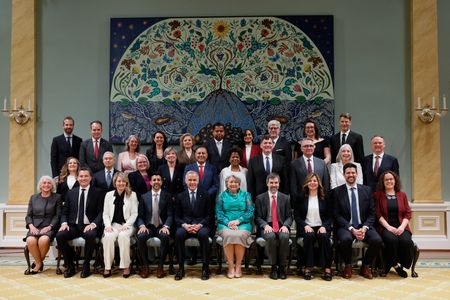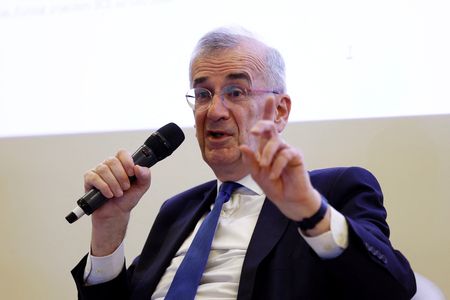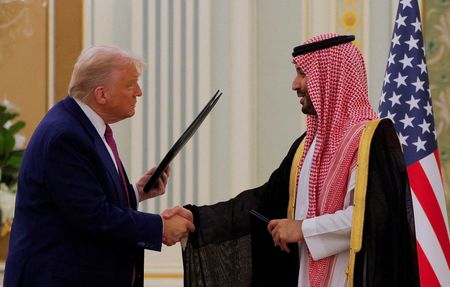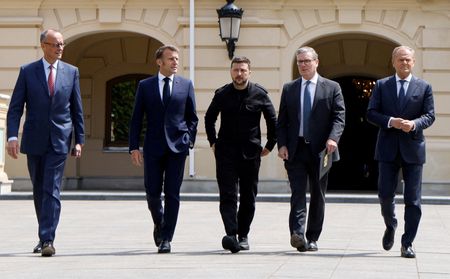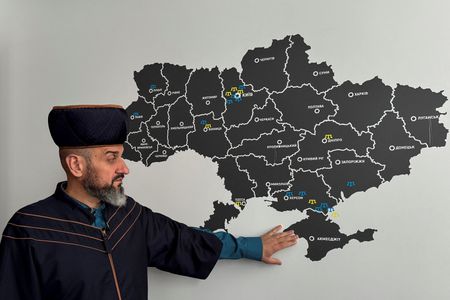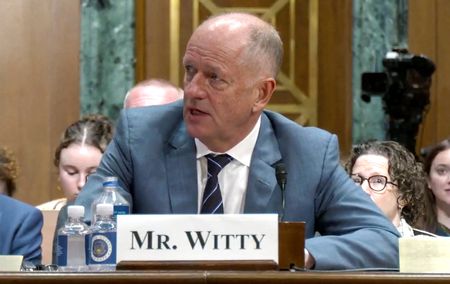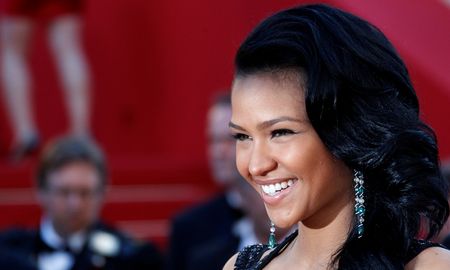By Promit Mukherjee and David Ljunggren
OTTAWA (Reuters) -Canadian Prime Minister Mark Carney, who won an election last month vowing to stand up to U.S. President Donald Trump, unveiled a new cabinet on Tuesday that he said would help urgently define a new relationship with Washington.
Carney cut the number of ministers to 29 from the 39 under predecessor Justin Trudeau, but kept some key players in their positions, such as Finance Minister Francois-Philippe Champagne and Dominic LeBlanc, who is in charge of U.S. trade.
Carney met Trump in Washington last week but did not secure any removal of tariffs the president has imposed on Canadian exports.
“Our government will deliver its mandate for change with urgency and determination,” Carney told reporters.
“Our workers and businesses continue to face the unfair tariffs imposed by the United States. My government will fight for Canadians.”
Carney says Canada must spend billions to start shifting the economy’s focus away from the United States as well as end barriers to internal trade and cut public spending.
“The business of government must be business … (we are) eager to work with the new government and all parties to tackle urgent nation-building goals,” said Matthew Holmes, policy chief at the Canadian Chamber of Commerce, calling for action on issues such as regulatory reform and trade diversification.
Melanie Joly moves from Foreign Affairs to Industry after four years and is replaced by Anita Anand.
Chrystia Freeland, whose resignation as finance minister last December helped oust an increasingly unpopular Trudeau, keeps her job as minister of transport and internal trade.
Former Goldman Sachs banker Tim Hodgson takes over as natural resources minister.
“For the Canada-U.S. relationship, it was very important for Prime Minister Carney to position smart, tough, and experienced people in the key portfolios … (he) has done just that,” said Cameron Anderson, politics professor at Western University in London, Ontario.
As well as the cabinet ministers, Carney named 10 junior secretaries of state.
His immediate promises are a tax cut and ending all trade barriers among the 10 provinces by July 1.
His platform, which promises additional spending of around C$130 billion ($93.20 billion) over the next four years, predicts that the 2025-26 deficit will be C$62.3 billion, far higher than the C$42.2 billion forecast in December.
Carney abolished the position of labor minister and replaced it with a secretary of state for labor, a move the Teamsters union called deeply confusing and concerning.
“It suggests the Carney government is underestimating the scale of the challenges facing Canadian workers in the years ahead,” union spokesperson Christopher Monette said by email.
The Trudeau government had to deal with several major labor disputes and last year intervened to end separate strikes by port, railway and postal workers.
In the election, Carney’s Liberals came within two seats of winning a majority in the House of Commons. The opposition Conservatives had been 20 points ahead in the polls in January but dropped off sharply after Trudeau quit and Trump imposed tariffs while musing about the annexation of Canada.
“So far it’s not a promising start. The first disappointment is unfortunately his cabinet – he appointed Trudeau’s old team,” Conservative leader Pierre Poilievre told reporters. “It’s more of the same when Canada needs real change.”
($1 = 1.3948 Canadian dollars)
(Writing by David LjunggrenEditing by Rod Nickel)

